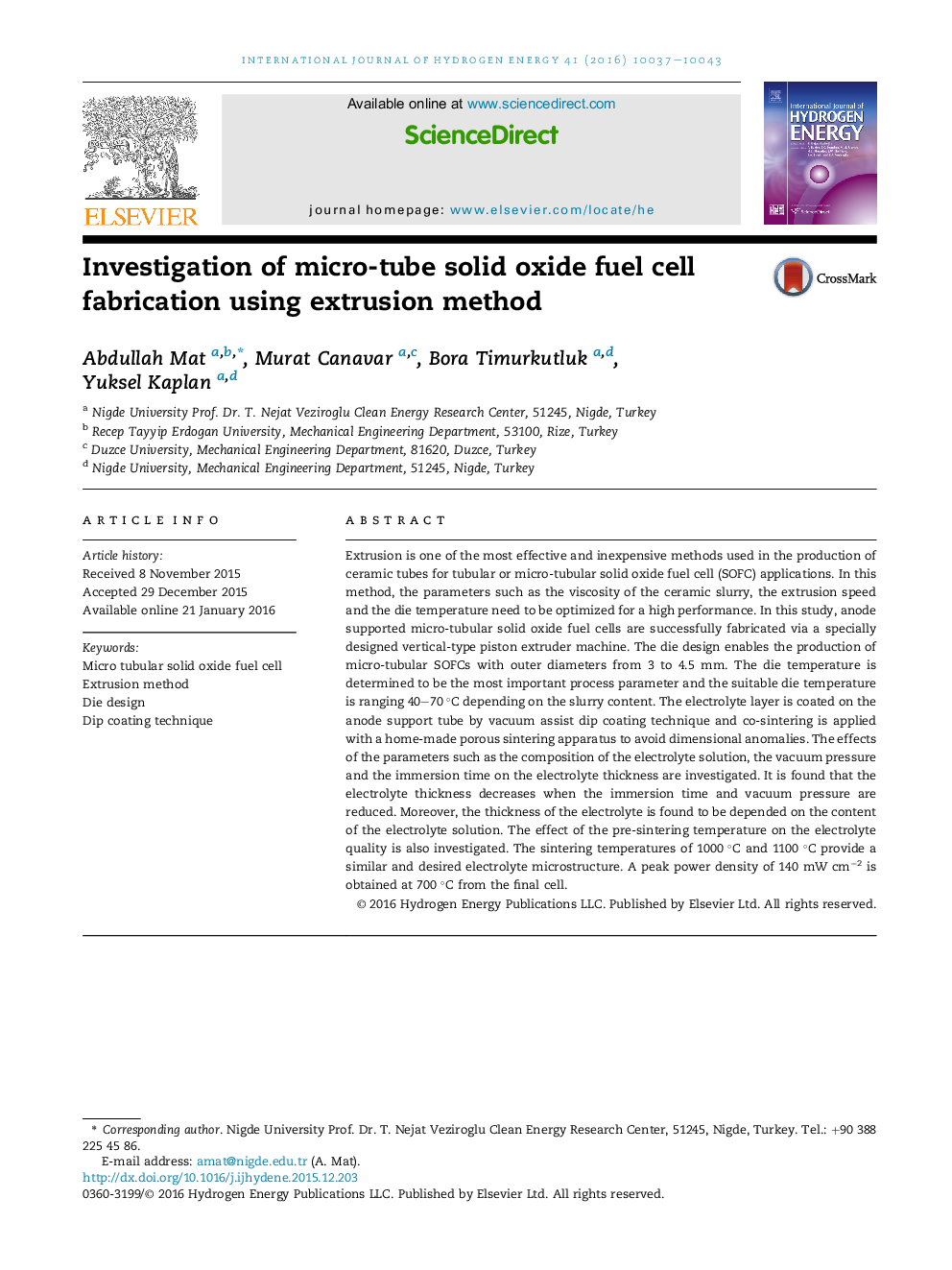| Article ID | Journal | Published Year | Pages | File Type |
|---|---|---|---|---|
| 1277057 | International Journal of Hydrogen Energy | 2016 | 7 Pages |
•Anode supported micro-tubular SOFCs are successfully fabricated via a specially designed vertical-type piston extruder machine.•The die temperature is determined to be the most important process parameter.•Properly dimensional tube is obtained using a novel design sintering plates.•The electrolyte layer is coated on the anode support tube by vacuum assist dip coating technique.•Pre-sintering temperature and effect of the solid loading in the electrolyte slurry are investigated on the electrolyte quality.
Extrusion is one of the most effective and inexpensive methods used in the production of ceramic tubes for tubular or micro-tubular solid oxide fuel cell (SOFC) applications. In this method, the parameters such as the viscosity of the ceramic slurry, the extrusion speed and the die temperature need to be optimized for a high performance. In this study, anode supported micro-tubular solid oxide fuel cells are successfully fabricated via a specially designed vertical-type piston extruder machine. The die design enables the production of micro-tubular SOFCs with outer diameters from 3 to 4.5 mm. The die temperature is determined to be the most important process parameter and the suitable die temperature is ranging 40–70 °C depending on the slurry content. The electrolyte layer is coated on the anode support tube by vacuum assist dip coating technique and co-sintering is applied with a home-made porous sintering apparatus to avoid dimensional anomalies. The effects of the parameters such as the composition of the electrolyte solution, the vacuum pressure and the immersion time on the electrolyte thickness are investigated. It is found that the electrolyte thickness decreases when the immersion time and vacuum pressure are reduced. Moreover, the thickness of the electrolyte is found to be depended on the content of the electrolyte solution. The effect of the pre-sintering temperature on the electrolyte quality is also investigated. The sintering temperatures of 1000 °C and 1100 °C provide a similar and desired electrolyte microstructure. A peak power density of 140 mW cm−2 is obtained at 700 °C from the final cell.
